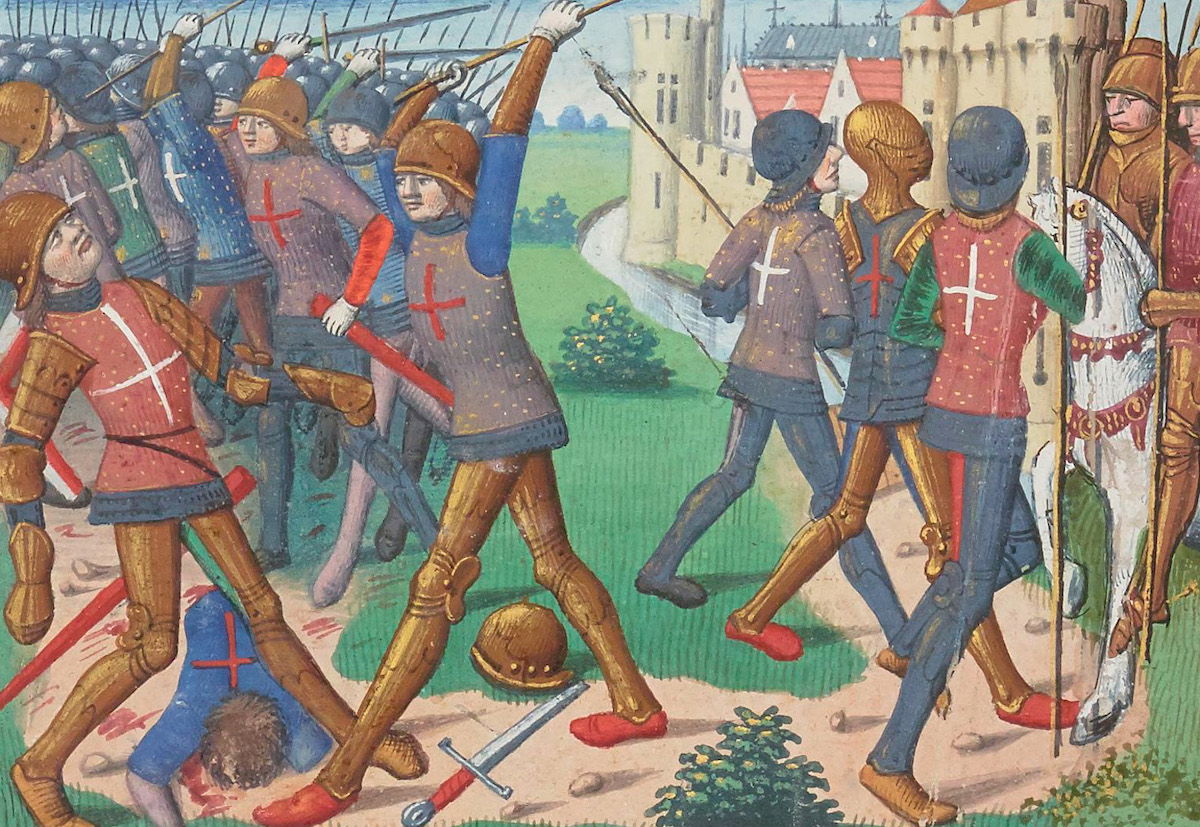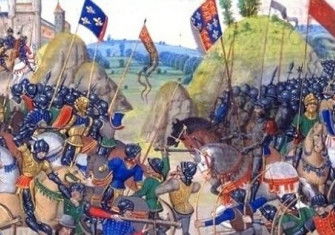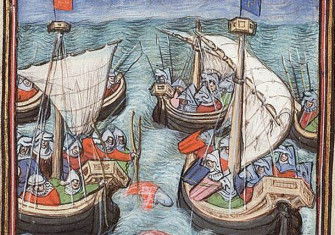‘The Hundred Years War Vol 5’ by Jonathan Sumption review
The Hundred Years War Vol 5: Triumph and Illusion by Jonathan Sumption charts the English downfall and France’s triumph to bring the epic five-volume history to its conclusion.

With Triumph and Illusion Jonathan Sumption has, after more than three decades’ toil and 4,000 pages, brought his epic five-volume history of the Hundred Years War to its conclusion. In this final volume he takes us from 1422 – the year in which Henry V died having achieved spectacular successes – to 1453, when his son, Henry VI, endured total loss. From a French perspective, the dates represent the ignominious death of the insane Charles VI and the ultimate victory of his son, Charles VII.
The denouement of the war is more interesting than its messy origins, when the death of Charles IV of France in 1328 marked the end of the Capetian dynasty and its replacement with the Valois one. This situation, coupled with the never-ending tensions between England and France (the former still holding Gascony, the latter probing into this territory under its aggressive new monarch, Philip) created an opportunistic moment for Edward III of England to claim the French throne through his mother, Isabella of France. That England could sustain the war, if intermittently, against a population perhaps six or seven times its size for more than a century is remarkable; but the outcome was surely inevitable (or as ‘inevitable’ as history allows). Sumption charts the English downfall, misled by delusion, and France’s triumph in enormous detail to show how this happened.
Henry V’s remarkable victory at Agincourt in 1415 seemed to usher in a new period of English dominance on the battlefield and a return to the heady days of Crécy in the 1340s. Together with his Burgundian allies Henry had conquered France down to the Loire Valley, leaving the disinherited dauphin Charles trying to claw back his land and title; the provisions of the 1420 Treaty of Troyes had seen the infant Henry VI of England also made King of France in the Dual Monarchy. Despite Henry V’s early death in 1422, England continued to do well in France for a few years under the capable command of his brother, the Duke of Bedford. In Sumption’s telling, Bedford is a rare protagonist commended for his positive qualities: ‘a capable administrator and an astute politician with an incisive mind’, the ‘beak-nosed’ Bedford ‘managed to combine an affable manner with an imposing presence and a habit of authority’. But despite his victory at the often overlooked Battle of Verneuil in 1424 (‘the bloodiest fight of the Hundred Years War’, in Sumption’s view, in a field of strong contenders) even Bedford could only hold the line for so long.
History repeatedly shows that fact can be stranger than fiction, as here, when an illiterate teenage peasant girl caused an English meltdown. The genuinely sensational and almost incredible story of Joan of Arc beggars belief. Sumption does well to explain how she turned the tide against the English in measured, factual tones. He devotes some 120 pages to the phenomenon of Joan, and her importance is further suggested by the book’s cover which depicts the English siege of Orléans in 1429, which Joan lifted, marking her out as the dauphin’s saviour and Bedford’s nemesis. Joan saw to it that Charles was crowned Charles VII of France at Reims that year; Bedford exacted his revenge in 1431 with the show trial and execution of Joan. That said, it is worth remembering that her trial and death were carried out by Frenchmen, many of whom, even in the dauphin’s court, ‘had always felt uncomfortable about her visions and male dress’.
Ultimately, more prosaic matters drove the English from France. The real turning point came with the collapse of the Anglo-Burgundian alliance in 1435 (the year of Bedford’s death) and the loss of Paris the following year. From then on, there was little the English could do to counter the weight of factors against them, especially after Charles effectively initiated war taxation and a standing army on a scale that left England’s inadequate fiscal efforts far behind. When England tried to emulate such policies, it led to counterproductive over-exploitation of the economy and trade. The more land France reconquered, the greater its tax base; painfully, the opposite was true for the English. As Sumption, always excellent on financial matters, notes: ‘The limiting factor for everything that the English did in France was money.’ Defeats, lack of funding and loss of confidence (especially from England’s peace faction) compounded recruitment issues: garrisons in Normandy were thin and unable to supplement field armies in any meaningful way. France’s military momentum was accelerated by the political one, and by 1453 the Hundred Years War was effectively over, leaving only Calais in English hands. While France celebrated, delusion continued in England for centuries. Only in 1802 would its monarchs cease to claim the French crown as their own.
Throughout the book Sumption ensures that the weight of detail – often concerning intricate politics and diplomacy – is leavened by startling anecdotes and revelations that keep the narrative lively and which remind us of the sheer strangeness and horrific brutality of the Middle Ages. After one town fell, an enemy soldier appeared above its gate with the severed head of one of the defenders and impaled it on a spike; the victim’s mother was waiting ‘in the crowd below with a bag full of money’ for the ransom. The powerful noble Jacqueline of Bavaria made a dramatic escape from her prison cell dressed as a man. In 1426 members of an English parliament were reminded they were not allowed to carry swords or weapons; they therefore hid clubs and rocks in their long hoods and sleeves instead.
This is truly grand narrative history at its most epic. Related with the authority of decades of research, the five volumes now constitute the essential work on the conflict and will be referenced by historians for generations to come. A singular achievement.
The Hundred Years War Vol 5: Triumph and Illusion
Jonathan Sumption Faber, 992pp,
£40 Buy from bookshop.org (affiliate link)
Sean McGlynn teaches medieval and early modern history at the University of Plymouth at Strode College.






